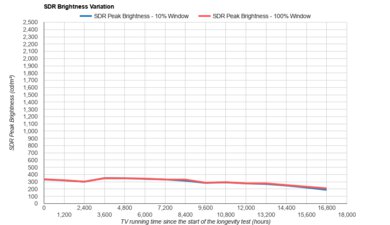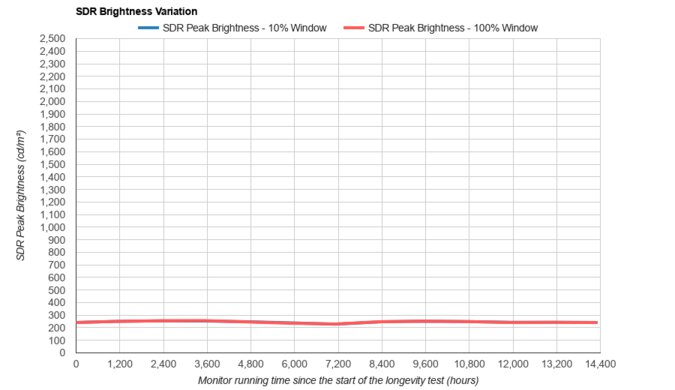
Our accelerated longevity test has been running for over two years now, and from full-on panel failures to image retention and LCD degradation, we've already encountered some interesting results. You can learn more about our latest results with our RTINGS.com R&D videos or our ten-month update article.
At the bottom of this page, you can see the raw data for all TVs on this test below by selecting the month and uniformity slide you'd like to see. If you want to learn more about how we created this test, check out our first article here.
Latest Research
The goal of RTINGS.com's ongoing 100 TV longevity test is to push TVs to the limits of their durability to examine failure points as they happen. One clear trend we've observed and investigated is that thin, edge-lit LCD TVs fail prematurely compared to LCD TVs with other backlighting technology.
The results of this investigation are unequivocal: edge-lit TVs are inherently prone to significant durability issues, including warped reflector sheets, cracked light guide plates, and burnt-out LEDs due to concentrated heat. These problems manifest after prolonged use at maximum brightness, posing a significant risk to their long-term reliability. You can learn more about this investigation in the video posted above or in our written article here.
This analysis, corroborated by real-world observations, highlights a crucial consideration for consumers and the industry. As manufacturers continue to push for thinner designs, addressing these durability concerns is imperative to ensure consumer satisfaction and trust. For consumers in the market for an LCD TV to whom the durability of their purchase is important, we recommend prioritizing models with better heat distribution, such as direct-lit or FALD TVs, for improved longevity and performance.
Year 3 Results Changelog (Last Updated 07/08/2025)
July 8, 2025 - Month 28 Update Data

New data update, new TV failures! It's been an interesting two months, with an increasing number of failures. Two TVs have been permanently removed from the test, the Hisense H8G and the LG G2 OLED, and seven TVs are either starting to fail or continuing to fail since the last update. The Amazon Fire TV Omni Series is failing rapidly, and roughly 30% of the backlight has completely failed over the last two months. The backlight is also starting to fail on the Hisense U9DG, and the Vizio P Series Quantum 2020 has gotten a lot worse since the last update.
We're monitoring a few TVs that are severely degraded, but stable. The TCL S546 can't produce colors properly, likely due to a failure of the quantum dot layer, so even the gray slides appear magenta for a while now. There's a dark spot near the center of the TV, but it doesn't appear to be getting worse. Similarly, the Vizio M6 Series Quantum 2021 hasn't gotten any worse over the last four months.
Some of the 8k models, like the Samsung Q900TS, are showing a sort of burn-in effect, with talking heads clearly visible over the last few months. We're not entirely sure what's causing it, but we suspect it could be the quantum dot layer degrading over time.
June 13, 2025 - Test Restarted
We've completed our planned network upgrades, and the test has restarted.
June 11, 2025 - Hisense H8G Failure

The Hisense H8G has gotten so bad that, in the interest of science, we've decided to disassemble it and figure out what went wrong. We found that the backlight consists of 9 rows of 16 LEDS, controlled in pairs, for a total of 144 LEDs in 72 zones. Of the 72 zones, only 10 are still working. We also discovered that the zones that no longer light up haven't necessarily fully failed. When we supplied power from an external power source to each individual LED one by one, we found that only 71 individual LEDs had actually failed, less than half. Since they're wired in pairs, though, any single failed LED prevents the pair from working. Needless to say, the H8G has now been retired from the test.
May 20, 2025 - 2 Week Pause
We're pausing the test for about two weeks to perform updates to our internal networking equipment. Since this test relies on a stable network connection for the live feed, we've decided to turn all TVs off for the update period. This will delay the next two-month data update by two weeks as well, so that update is now scheduled for early July. We'll post another update when the test resumes.
April 17, 2025 - Month 26 Data Update

Time for another two-month data update! We're approaching the planned end of our 2+ year accelerated longevity test, and the rate of failure is increasing rapidly. Most of the displays on the test have over 15,000 hours of usage, which is probably more than most people will ever use a TV without upgrading, but we're seeing failures across the spectrum of display types. More edge-lit TVs like the LG NANO85 2021 shown above are showing cracks in the light guide plate. The crack on that LG appeared suddenly and is rapidly expanding. It's not just edge-lit TVs that are failing, though, as LEDs on the LG UP8000, TCL S546 2021, and the Vizio P Series Quantum 2020 are starting to fail. These are all direct-lit TVs, with LEDs directly behind the panel, so there's no light guide plate to crack. Instead, failed LEDs show up as dark spots on a uniform image. Our problematic LG G2 OLED has also finally bit the dust, as it restarts randomly, sometimes multiple times per day, making it impossible to test.
Year 2 Results Changelog
February 11, 2025 - 2-Year Data Update

We've now hit the two-year mark for most TVs on the longevity test! Not much has changed over the last two months. Backlight issues continue to worsen for a few LED TVs, like the Hisense H8G, LG QNED80 2022, Samsung Q60B QLED, and the Vizio M6 Series Quantum 2021. All four of these are so bad that most consumers would have definitely replaced them, as they're unwatchable at this point, but we're keeping them running until they completely break.
As for the OLEDs on this test, well, they're all pretty bad at this point. The burn-in continues to worsen on all of them, and as you can see in the Vizio OLED above, it's pretty bad, with the CNN "Breaking News" banner clearly visible, as well as the ghosts of the talking heads. This TV is showing the worst burn-in of all of them, but the banner at the bottom is noticeable with real content on all OLEDs at this point, even on the LG G3 and the Samsung S95C, both of which were added to our test about six months later than the other models.
December 18, 2024 - Right Side Of The Bathtub Curve?
Well, just about a month after our last update, three more TVs appear to have failed. The Hisense A6H still powers on but appears to have suffered a backlight failure. On the other hand, the Hisense A6G and Toshiba C350 seem to have completely failed and no longer power on. We're in the early stages of investigating these failures, so we'll update the original reviews once we've confirmed the failure.
In other news, the longevity test will be shutting down for two weeks starting Friday, December 20th. Our offices are shutting down for the holidays, so we don't want anything failing when we're not there to watch. We'll be back on January 6th, 2025, to start the last year of this iteration of the test.
November 20, 2024 - Month 22 Data Update
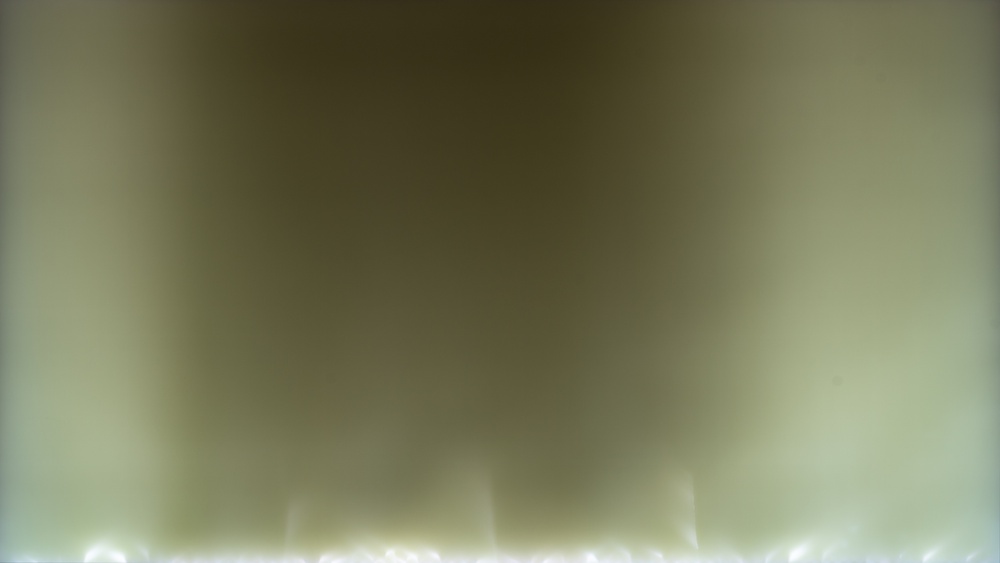
The 22-month results have been updated to each individual review page. After 22 months, we're starting to enter the right side of the bathtub failure curve. Over the last two months, the number of partial failures has increased drastically, with 4 new TVs showing significant backlight failures, including one new TV that completely failed, the Hisense A6H. The Hisense H8G continues to decline, with most of the backlight zones now completely off. The LG NANO75 2022 is starting to fail, with one dark spot near the center, and the LG QNED80 2022's backlight is failing in the center (shown above). The Vizio M6 Series Quantum 2021 is also starting to fail, and the top third of its backlight has now failed.
As for the test itself, although we're approaching the end of our initial 2-year test run, we've decided to keep it running into 2025. The rate of TV failures is increasing rapidly, and we want to learn more about this end of the curve. This trend is expected to continue in the coming months, with more and more TVs failing and developing increasingly bad uniformity issues.
September 11, 2024 - Month 20 Data Update
The 20-month results have been updated to each individual review page. Not much has changed this month, but the Hisense H8G continues to degrade, with more dead spots in the backlight. Unfortunately, our attempts to repair the Sony X800H and the Insignia F50 QLED have failed, and we've permanently removed these two TVs from the longevity test. We've also had a new failure, as the backlight on the Amazon Fire TV 4-Series has failed.
July 29, 2024

The backlight on the Insignia F50 QLED has completely failed. The TV powers on, but there's no light from the backlight at all. We'll dismantle the TV to try to determine if it can be fixed, but for now, it's been removed from the test. The Sony X800H has also suffered a similar fate and has been removed from the test.
July 26, 2024
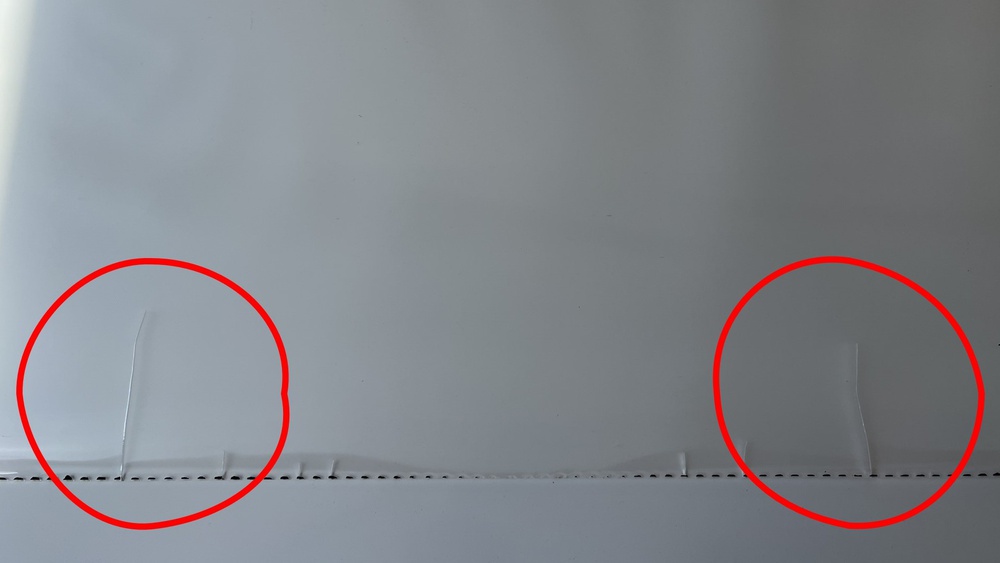
We published new results of an investigative study on the long-term durability of TVs. As part of our two-year test, which has so far subjected 100 TVs to over 10,000 hours of accelerated testing, we found that edge-lit TVs have significant durability issues. These issues range from warped reflector sheets and cracked light guide plates to completely burnt-out LEDs. Over 64% of the edge-lit LCD TVs on our long-term test show significant uniformity issues, compared to just 20% of the full-array and direct-lit TVs on the test. You can read the full results of our investigation here. The study is still ongoing, and we expect to see even more issues pop up with the other edge-lit TVs on the test over the coming months. We also posted a new video covering the findings of our edge-lit TV investigation.
July 17, 2024 - Month 18 Data Update
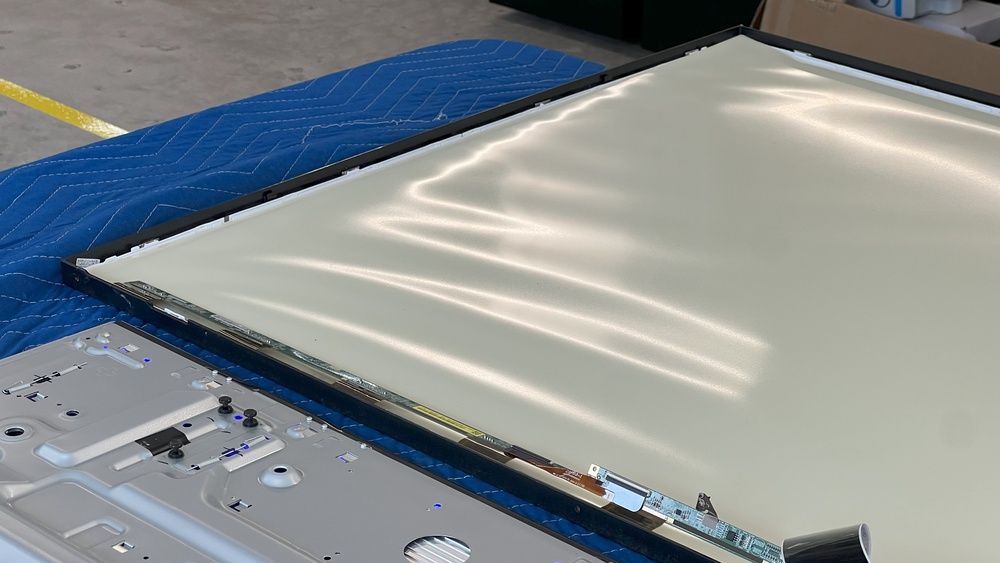
We've uploaded the 18-month results to each review. There's very little that's new to report this month; most of the LED TVs on the test are continuing to degrade (especially edge-lit models, more on that in a few days!). All OLED TVs are now showing signs of permanent burn-in. The Samsung S95C OLED remains the most resilient of the OLED models, showing only slight signs of burn-in. The Samsung Q60B QLED is now showing signs of pinching along the bottom edge, and the dark spots on the Hisense H8G cover a significant portion of the screen now. The Vizio OLED 2020 continues to be the worst OLED on the test, with the words "Breaking News" and "2024" now clearly visible. As for the three monitors on this test, there's very little change over the last update. The CNN news banner is faintly visible on all three, but it's still relatively minor and not really noticeable with real content.
June 11, 2024
We've completed our failure investigation into the Samsung AU8000, Samsung The Frame 2022, and the Hisense U8H. Unfortunately, we had to permanently remove all three of those TVs from the longevity test, as the AU8000 can't be fixed, and the Frame 2022 and U8H broke during the investigation and are unusable. We're wrapping up a nearly two-month investigation into the uniformity issues these and other edge-lit TVs developed. Look for the final results of that investigation soon.
May 2, 2024 - Month 16 Data Update
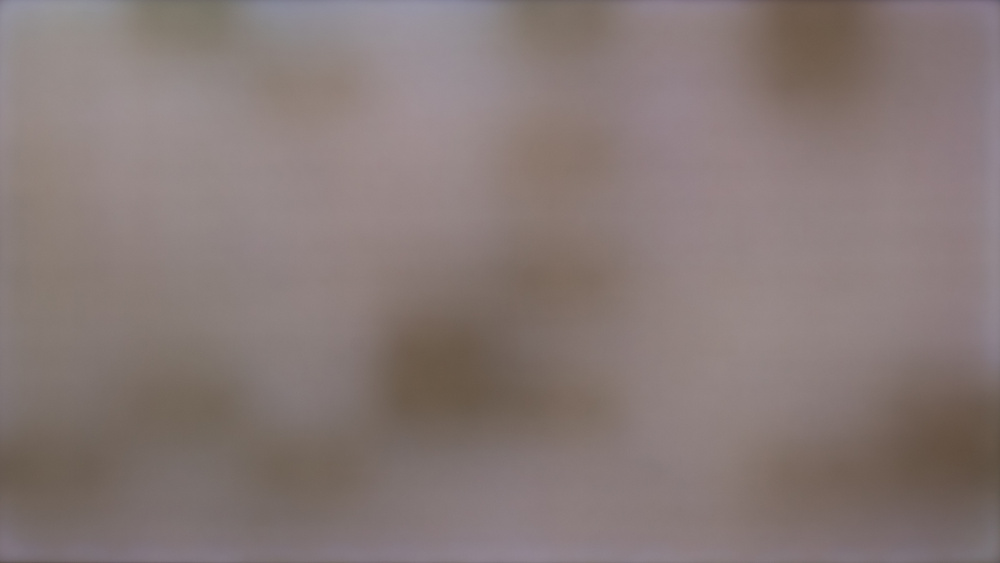
The 16-month results have been uploaded to each individual review. The Samsung AU8000 is still broken and has been temporarily removed from the test. We're monitoring several issues with almost all TVs, including uniformity issues and significant backlight failures on some LCD models. The Hisense U8H has lost nearly 70% of its brightness since the beginning, and the Hisense H8G has developed dark spots across the screen over the last two months. There's no significant change to the OLEDs; the Samsung S95C OLED remains surprisingly resilient, with no noticeable signs of burn-in, but every other OLED is showing some image retention.
March 27, 2024
The backlight on the Samsung AU8000 has failed. We don't know yet if we can repair it, but we're looking into it to determine the cause of the failure and if we can fix it or not.
February 13, 2024 - Month 14 Data Update
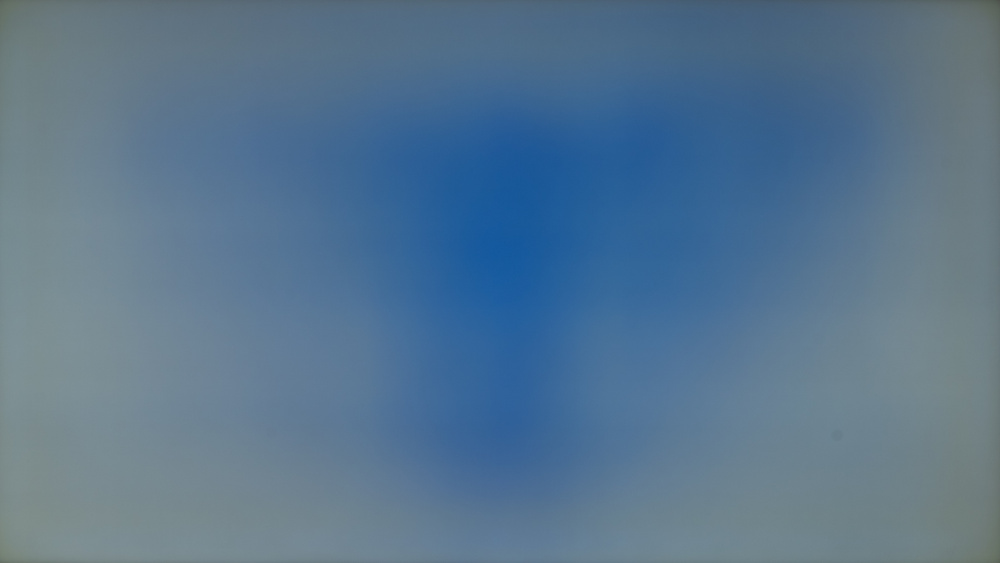
The results after 14 months have been posted to each review, and we've updated the table below. Not much has changed over the last two months, with no new full failures. A number of LED TVs are continuing to show noticeable degradation. The Samsung Q900TS 8k QLED has a more noticeable dark spot along the bottom middle of the screen, and the backlight of the Samsung AU8000 is continuing to fail. There's a pinched spot on the bottom of the LG QNED80 2022; this appears to be physical damage on the outside of the TV, not a failure of the panel. The backlight on the Hisense U8H (above) is failing rapidly; at this point, it's pretty much unusable. As for the OLEDs, well, they're continuing to experience burn-in, especially the older models like the Sony A80J OLED and the LG CX OLED, and the Vizio OLED 2020 is nearly unusable at this point.
January 25, 2024
We've posted our latest video, covering the 1-year results with a focus on LCD models and future failures. Check it out here!
December 5, 2023 - 1 Year Update
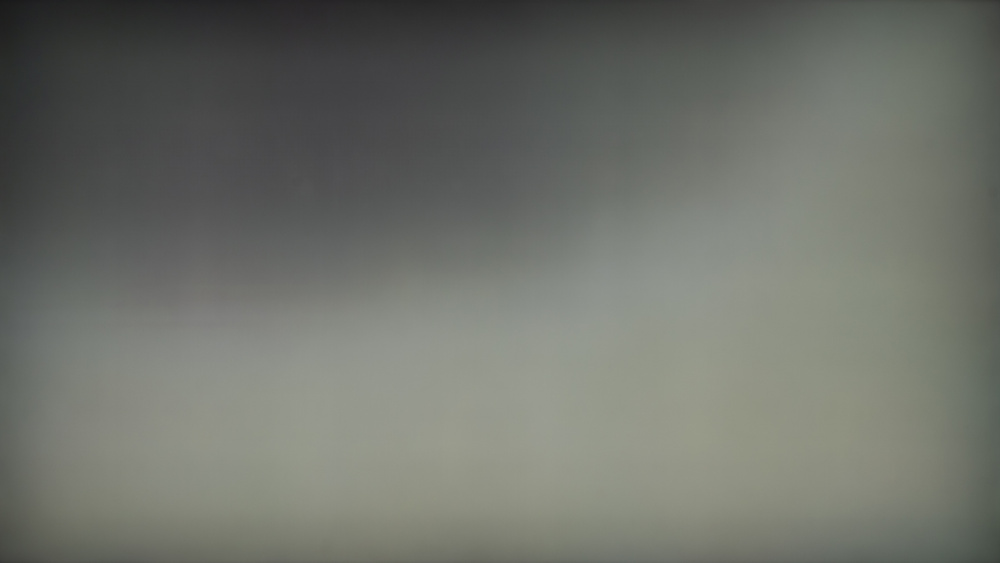
We've posted the 1-year results to each review and updated the table below. Most of the TVs on this test have now accumulated 7,200 hours of runtime. Not much has changed since our last update. The same LCD TVs continue to degrade, and some are so bad that they're unwatchable. The Hisense U8H, which started to show some uniformity issues in our last update, is now completely blue in the center of the screen, and the Samsung TU8000 looks terrible. Over a dozen LCD TVs are now showing signs of image retention, but only on a 5% gray slide (TCL 6 Series/R646 2021 QLED, LG NANO75 2022, Samsung Q60B QLED). This isn't noticeable with our published slides or real content. This might be caused by some form of TFT voltage shift, similar to temporary image retention on an OLED, but LCD TVs lack the compensation mechanism necessary to remove it. We'll keep monitoring this issue to see if it worsens.
As for the plethora of OLED TVs on this test, most are also showing signs of burn-in now. Interestingly, the Samsung S95C OLED, which uses a new real-time compensation algorithm, looks significantly better than the Samsung S95B OLED after the same number of months. As for the three monitors, the CNN breaking news bar is barely visible on all three of them, but only on test slides; it's not noticeable with real content.
Year 1 Results Changelog
- 10/17/2023: We've posted a new article exploring the main events over the last ten months and what we've learned so far about longevity. You can read more about our latest findings here.
- 10/11/2023: We've posted the ten-month results to each review and updated the table below. It's been a fairly quiet two months, with no new full failures, but LCD degradation on some TVs is getting really bad. Some TVs, like the Insignia F50 QLED, could be considered to have failed, as it's unlikely anyone with a TV that looks that bad at home would continue to use it. However, we'll continue testing them to complete failure to see just how bad it gets. There's also a noticeable improvement in some of our OLED TVs, as we recently discovered that some TVs weren't running their short compensation cycles properly, or even at all in some cases. We're now forcing this process manually before we take our uniformity photos, and on some TVs, this has cleared up the image retention considerably. To learn more about this change and our findings, check out our latest RTINGS.com R&D video linked above.
- 08/10/2023: Unfortunately, after posting our eight-month results, we noticed that there were specks of dust on our camera or lens when the photos were taken. This doesn't impact the overall results of the test, but these specks are noticeable in the uniformity slides for each TV and monitor. We've updated our methodology to ensure that this doesn't happen again.
- 08/09/2023: We've posted the eight-month results to each review and updated the results below. Most TVs continue to perform well, but there are a few TVs that are getting worse. The Insignia F50 QLED looks terrible, with a significant portion of the screen darker than the rest, and the backlight of the Samsung TU8000 is getting worse. The dead column on the LG G2 OLED is back, and there are other dead columns. The Sony A90J OLED and the Sony A90K OLED are both significantly brighter than they were at the six-month update, and we don't know why. Finally, the TCL 6 Series/R646 2021 QLED shows signs of temporary image retention in a surprising development. It's different from OLED burn-in, and we'll look into this to better understand the issue. The results for the monitors on the test have also been updated.
- 07/04/2023: After running ~500 short compensation cycles on the Sony WOLED TVs, we've managed to eliminate a large amount of image retention from some of these TVs, which implies that it was temporary image retention and not permanent burn-in. Some burn-in is still visible. The vast majority of the reduction in image retention occurred in the first few cycles, but we still ran them to match the Sony TVs to the LGs. Except for the new models recently added, all TVs have run approximately the same number of compensation cycles since the beginning of the test. Since CNN updated their logo on June 1st, we've also been looking into how this impacts our longevity test.
- 06/09/2023: We're looking into the short compensation cycle on Sony WOLED TVs to better understand them. We've found a way to manually trigger this cycle, so we're running it repeatedly so that Sony and LG TVs will have run the same number of compensation cycles total since the start of the test. We hope to have the results of this test in the coming weeks.
- 06/07/2023: We've posted the six-month results to each review and updated the results below. The uniformity issues with some LED TVs, like the Amazon Fire TV Omni Series, the Insignia F50 QLED, LG NANO90 2021, and the Samsung AU8000, continue to worsen, and we see more signs of burn-in on most of the OLED TVs. We'll post another article to explore these issues and share our findings with you in the coming days. We've also added the initial measurements for the LG G3 OLED, which has now been added to the test.
- 05/24/2023: The motherboard of our LG 27GR95QE-B was swapped out with one from a new unit, and the monitor is working again and has been returned to the longevity test.
- 05/23/2023: We've replaced the mainboard for the Samsung QN900A 8k QLED, and it's working again. We've added it back to the test.
- 05/18/2023: While trying to enter the service menu, our LG 27GR95QE-B shut down and no longer turns on. It appears to be completely bricked, so it's been removed from the test.
- 05/11/2023: Unfortunately, after partially disassembling the Sony A80K OLED, we've determined that the OLED panel itself is likely the source of the failure, and it's not worth repairing. It's been permanently removed from this test.
- 05/08/2023: We've adjusted how we've been running the monitors in this test based on feedback from Samsung Display. We were previously maintaining the 16:9 aspect ratio of the CNN feed, even on widescreen monitors. Samsung Display pointed out that this actually increases the brightness of the CNN feed, as the letterbox bars result in a lower overall average APL. We've adjusted all three monitors to stretch the content to match the monitor's aspect ratio.
- 05/08/2023: The Sony A80K OLED has completely failed and has been removed from the test. A column of blue light is always on in roughly the same spot as the green column mentioned below. The Google TV smart interface fails to load, and it keeps rebooting, getting no further than the Google TV logo each time, so we're unable to continue testing it at this time.
- 04/28/2023: A column of green subpixels has died on our Sony A80K OLED, similar to the LG G2 OLED. Even stranger, the column of dead pixels on the G2 seems to have fixed itself and is now working properly. We're looking into both TVs to better understand what caused the columns to fail and how it could fix itself. We've already run the pixel refresh cycle on the A80K and determined that that alone isn't enough to fix the issue.
- 04/26/2023: Our Samsung QN900A 8k QLED has failed and no longer turns on. Like the Samsung S95B OLED, this appears to be a power supply failure. We've ordered replacement parts and will update this page when we've fixed it.
- 04/06/2023: Samsung released firmware update 1448.1 for the Samsung S95B OLED that now runs the main compensation cycle automatically after about 2,000 hours. This large compensation cycle is extremely effective at reducing the appearance of burn-in.
- 04/03/2023: We've posted the four-month results to each review and updated the results below. We've also posted the initial measurements for the four displays we added last week. The initial measurements were taken at the same as the four-month updates, and all displays are now running on the same schedule.
- 03/30/2023: We've added the Samsung S95C OLED to the longevity test to see if the second generation of QD-OLED panels is more or less likely to burn-in compared to the first generation panels used on the Sony A95K OLED and the Samsung S95B OLED. We've also added three monitors, the Dell Alienware AW3423DWF, the Samsung Odyssey OLED G8/G85SB S34BG85, and the LG 27GR95QE-B.
- 03/22/2023: We've posted a video covering our latest results. You can see it here.
- 03/21/2023: We replaced the DC power supply, and the Samsung S95B OLED is now working properly. It has been returned to the regular longevity test schedule and runs normally.
- 03/13/2023: After a brief delay, the Sony 42" A90K OLED has started a two-week run with a modified schedule. It'll display CNN on a 4.5-hour on, 4.5-hour off cycle, allowing it to run 21 compensation cycles per week. The test is scheduled to run until March 27th.
- 03/09/2023: We've posted the findings from our first investigations on our first results page here.
- 03/08/2023: Added the changelog with everything that's happened in this test so far.
- 03/07/2023: The Hisense U7G has been repaired and returned to the test. We replaced the burnt power wire, power supply, and LED driver board, and it now appears to be working properly.
- 03/06/2023: Our Samsung S95B OLED no longer powers on. We've removed it from the test and ordered replacement parts. The issue appears to be with the power supply.
- 02/28/2023: The Sony A95K OLED and the Samsung S95B OLED have completed the image retention fix trial and have restarted the longevity test.
- 02/27/2023: We're starting a new sub-test with the 48-inch LG C1 OLED and the 42-inch Sony A90K OLED. We want to see if they experience image retention when we reverse the schedule, allowing the LG to only run three compensation cycles per week, but allowing enough time for the Sony to run three per day. This test is expected to run for about three weeks.
- 02/21/2023: We've started a new trial with the Samsung S95B OLED and the Sony A95K OLED, so they've been removed from the regular test. We're running an image retention fix video to see if we can reduce the amount of burn-in on the TVs. The five Sony TVs that previously ran this test have completed it and have restarted the longevity test.
- 02/16/2023: We've posted the two-month results for the other 28 TVs.
- 02/14/2023: We've started a trial with the Sony A80J, A90J, A8H, A90K, and A80K, so they've been removed from the regular test. We're running an image retention fix video to see if we can reduce the amount of burn-in on the TVs.
- 02/06/2023: Month 2 results have been posted for 72 TVs. We're still working on analyzing data for the other 28 TVs.
- 02/02/2023: A single column of green subpixels has died on our LG G2 OLED. We're leaving it in the test for now to see if the issue spreads.
- 01/23/2023: The backlight on the Hisense U7G has failed. It still powers on, and we can see that the LCD layer is still working, but there's almost no light output. We dismantled it and discovered that a connector had overheated and burned. We've pulled it from the test and ordered replacement parts.
- 12/01/2022: The Sony X95J has developed severe uniformity issues on the left side of the screen. It looks like some of the LEDs are starting to fail.
- 11/18/2022: We've adjusted the test schedule based on reader feedback. There are now a few longer off periods during the week to allow the Sony OLEDs time to run their compensation cycles, as they need to be off for four hours before the cycle will run.
- 11/16/2022: Today marks the official start of the longevity test. We plan on running the test for at least two years, until the end of 2024.
Longevity Test - Uniformity Slides And Brightness Graphs (Last Updated 07/08/2025)
Below this, you can see a table with the uniformity slides from our bimonthly updates and the graphs showing the brightness change over time. The latest slides will always be available here as we process and upload new results.
TV Results
Monitor Results
Model | Brightness Graph | Uniformity |
|---|---|---|
Dell Alienware AW3423DWF |  | |
LG 27GR95QE-B |  | |
Samsung Odyssey OLED G85SB S34BG85 |  |









































